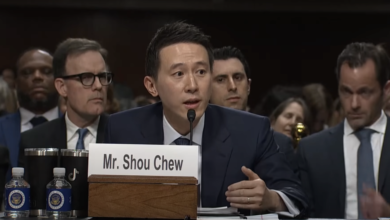 Photo: Bill Hackwell |
Soldiers must obey “customs and courtesies,” such as saluting and addressing your superiors as “ma’am” and “sir.” Wearing insignia indicating your rank and pay grade are constant reminders of your place in the military hierarchy.
But these rigid distinctions cannot suppress the class struggles inherent in capitalism. In fact, there is a rich history of resistance to authority within the military. From rebellions in the American Revolution to the French fleet’s refusal to invade revolutionary Russia in 1919, resistance to military authority is more common than bourgeois historians acknowledge.
During the Vietnam War, massive resistance within the U.S. military helped stop the war.
Soldiers resist the Vietnam War
The struggle against the U.S. war of aggression in Vietnam took place both inside the United States and on the battlefields across Vietnam. The heroic resistance of the Vietnamese people to U.S. invasion and mass killings caused soldiers to turn against the war. This was particularly true after the Tet Offensive—the turning point in the war.
In January 1968, Vietnamese fighters attacked U.S. military bases and headquarters across the country, even hitting the U.S. Embassy in Saigon. Thousands of U.S. enlisted troops came home from the battles in body bags.
Huge anti-war demonstrations, a strong and militant youth and student movement, and popular national liberation struggles by Black, Puerto Rican, Chicano and Native American communities in the United States also inspired and encouraged large-scale resistance to the war.
Resistance to the draft was rampant. Thousands of young people fled to foreign countries to avoid prosecution, while others publicly burned their draft cards or returned them to the Justice Department in defiance. In 1965, only 380 people were prosecuted for evading the draft; in 1969 there were 33,960. In May 1969 alone, 2,400 of the 4,400 drafted soldiers did not show up.
Enrollment in ROTC programs fell from 191,749 in 1966 to 72,459 in 1973. The programs didn’t fill their quotas for six straight months in 1973.
GIs already serving in the military wanted out too. Until 1968, the desertion rate for U.S. troops was lower than in previous wars. But by 1969, the number of desertions increased fourfold. The equivalent of four infantry divisions had deserted by 1970. Some soldiers even joined the Vietnamese liberation fighters.
This wasn’t limited to troops in Vietnam; GI desertion rates skyrocketed worldwide. In 1971, more than 89,000 soldiers deserted.
By 1971, 17 of every 100 soldiers were AWOL (absent without leave). “Less than honorable discharges” were cumulatively estimated at 700,000 by the war’s end.
GI coffee houses sprang up at military installations all over the United States. They became meeting places for soldiers opposed to the war. By 1972, roughly 300 anti-war, anti-military underground newspapers had been put out on U.S. bases by enlisted people, featuring articles against the war, on GI harassment and on legal rights for servicemen. They had names like “Harass the Brass,” “The Bond,” and “All Hands Abandon Ship,” and reached hundreds of thousands of GIs.
Articles often pointed the finger at the military leadership, the “brass.” A quote from the underground “Ft. Lewis-McCord Free Press” shows this common theme: “In Vietnam, the Lifers, the Brass, are the true enemy.”
American Servicemen’s Union
By the end of 1967, the American Servicemen’s Union was formed with GIs, Marines, sailors and airmen from around the United States. The ASU was unique because it mobilized around the class interests of the enlisted soldiers. Both military and civilian organizers participated.
The ASU wanted to unionize the military. Its demands included an end to racism in the armed forces, the right of GIs to collective bargaining, federal minimum wages for all enlisted personnel, the right of free political association, the election of officers by the enlisted, and the right to disobey illegal and immoral orders.
Within two years, the ASU had over 10,000 members. The membership numbers grew larger as the war raged on. Its newspaper, “The Bond,” had 75,000 readers.
The ASU supported GI resistance and fought against courts-martial. Most notably, the ASU aided the Fort Hood 43. They were Black soldiers who refused orders to go to the 1968 Democratic National Convention in Chicago. They refused to repress protestors and any potential uprising in the Black community.
Support for the resisters grew inside and outside the military, largely because of the ASU’s organizing efforts. With so much attention on the case, the military brass settled on dispensing short sentences and letting many off.
 National liberation struggles inside the United States fueled resistance within the military. Photo: Flax Hermes |
Much resistance inside the military came from Black soldiers and those from other oppressed nationalities. Racist military policies and officers sparked these soldiers to fight hard against the institution.
The Vietnamese revolutionaries also appealed to African Americans to get out of the war. They frequently left leaflets lying in the jungle for Black soldiers. Leaflets said things like, “Blacks get out, it’s not your fight” or, “They call us gooks here and they call you niggers over there. You’re the same as us. Get out; it’s not your fight.”
In the United States, the Black Panther Party issued calls to Black GIs to “Either quit the Army now, or start destroying it from the inside.”
Black and white soldiers also rebelled against racism and the war together. One major rebellion took place on the U.S.S. Constellation off the coast of southern California in November 1972. In response to threats of less than honorable discharges against a group of Black sailors, over 100 Black and white sailors staged at sit in and, later, a dockside strike.
Sabotage and ‘fragging’
As the conflicting interests between soldier and officer became more and more apparent, soldiers began to take more drastic measures. Increasingly soldiers refused orders to go into the field.
War equipment was frequently sabotaged and destroyed, most notably on U.S. Navy aircraft carriers. Numerous ships and aircraft carriers were unable to leave port after being severely damaged by angry GIs.
With increasing frequency, soldiers were disarmed by officers for fear of reprisal. The uncertainty of soldiers’ loyalty eventually contributed to the Pentagon’s decision to concentrate on aerial bombardment instead of ground troop movements.
Marine Col. Robert Heinl Jr. decried the crippling effect of widespread soldier resistance to the Vietnam war: “By every conceivable indicator, our army that remains in Vietnam is in a state approaching collapse, with individual units avoiding or having refused combat, murdering their officers and non-commissioned officers. … Sedition, coupled with disaffection from within the ranks, and externally fomented with an audacity and intensity previously inconceivable, infest the Armed Services.” (“The Collapse of the Armed Forces,” Armed Forces Journal, June 7, 1971)
Soldiers violently rebelled against the most despised officers. “Fragging”—rolling fragmentation hand grenades into the tents of officers—was one method used by soldiers to resist.
In 1970 alone, the Pentagon reported 209 fragging cases. The Pentagon later admitted that 600 fraggings occurred during the war. Around three percent of officer deaths in Vietnam between 1961 and 1972 resulted from fraggings. Those are conservative estimates.
The number of known fraggings only account for officer killings committed with grenades. They didn’t include the hundreds, if not thousands, of officer deaths at the hands of soldiers from automatic weapons fire, handguns and knifings.
This mounting wave of resistance deepened the crisis for the U.S. military. Resistance and outright rebellion to the war became so strong from all sides that the government was eventually forced to leave Vietnam defeated.
Iraq crisis deepening
There have already been signs of rank and file discontent with the ongoing occupation of Iraq.
Last summer, a group of 19 reservists refused to follow orders because they felt their mission was too dangerous. The military leadership tried to characterize it as an isolated and singular incident but other developments indicate that resistance may be more widespread.
A December 2004 report on 60 Minutes stated that 5,500 soldiers failed to report for duty. More and more soldiers on leave from Iraq are refusing to return.
Two of the more widely known cases are Abdul Henderson, featured in Michael Moore’s Fahrenheit 9/11, and Camilo Mejia. Mejia was the first soldier to refuse to go back to Iraq after coming home for leave. He was court-martialed and has since served a one-year prison term.
The issue of the draft is highly unpopular in the United States. With the exception of a bill proposed by Congressman Charles Rangel in 2004, politicians have largely been afraid to address the subject.
But the extensive use of the Reserves and National Guard as active duty-forces is a kind of “backdoor” draft. The Guard and Reserves are contracted to serve one weekend per month and two weekends in the summer, but many recently have been locked into tours of duty of up to two years.
As the occupation drags on and more soldiers die, the potential for reactions like those in the Vietnam War will likely increase. The recent failure to meet recruiting quotas in all branches of the military is only the beginning. More drastic measures may soon be seen.
Resistance and rebellion within the military in Vietnam underscores the revolutionary potential of enlisted soldiers. All the contradictions in society—class conflicts, racism, sexism and bigotry—are intensified within the armed services. Mass anti-war, anti-racist and class struggles on the “outside” reverberate inside. The lessons are relevant to the current crisis in Iraq.
Enlisted soldiers are workers in uniform. Their interests aren’t served by imperialist wars.






